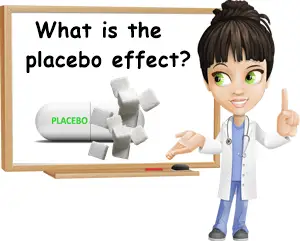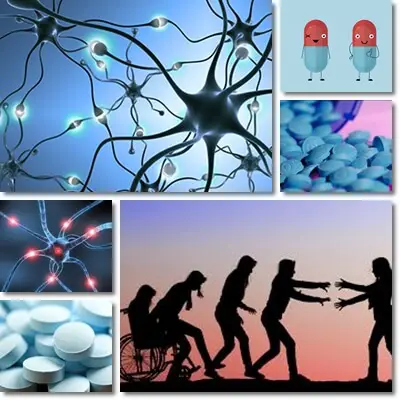A placebo is an innocuous substance with no real therapeutic value given as medical treatment, without disclosing the fact that it is not an active treatment. Despite its lack of therapeutic value, a placebo can produce visible positive changes in a person’s health status and this is known as the placebo effect. If the person receiving a placebo experiences or reports side effects, then it is known as the nocebo effect. The placebo and nocebo effects are products of a person’s mindset and belief or lack of trust in the pseudo-treatment.
What is the placebo effect? The placebo effect is a positive physiological reaction to a fake treatment. By definition, it is a pseudo-treatment that aims to please the expectations of a sufferer by providing them with a miracle substance they are told will cure their disease. The placebo itself does not produce any physiological effects because it is a worthless product from a medical standpoint, containing no active medicine. The positive physiological reactions are a direct result of the sufferers own mind, telling him or her the medicine they think is real works as per their expectations.

How does the placebo effect work? A placebo is often a sugar tablet or other harmless substances with no real medicinal value. It is given to a sufferer without disclosing the fact that it is not a real treatment, but presented in a way that makes it appear as an active medicine. The point is to delude the brain into thinking it is receiving treatment and, as a result, it should expect physiological signs the treatment is working. The theory is that the body needn’t receive actual treatment; it’s the brain that has to be fooled into thinking so.
The science between the placebo effect is based on the idea that the human brain can heal the body by itself. The brain has indeed been found to regulate physiological functions and, if it is told the body is healthy and works optimally or is healing, it can somehow regulate certain functions so that it achieves physical and mental health. This theory that the brain can heal the body is believed to be behind most, if not all cases of spontaneous remission (spontaneous healing). And indeed, there is proof the brain controls the immune system response, metabolism, endocrine system and hormone production and other functions.
What makes this mechanism almost impossible to understand is the fact that healing the body through brain power cannot be replicated. However, it is believed that this has to do with the fact that it is often difficult to trick the brain. For example, some people who may be given a placebo and told they are receiving actual treatment might not have absolute faith in the so-called treatment working. And it’s this absolute faith, blind trust or strong belief that creates the expectations needed to fool the brain into healing the body itself.

Placebo effect: types
In addition to the different types of harmless substances used to imitate real medicine, there is another important classification of placebos. When receiving a pseudo-treatment, some people automatically trust in its presupposed effectiveness and this might lead to improvements in their health status. Some do not have any faith in being cured by the treatment, in which there might be no changes in their health status. Other people might even think the treatment (placebo) will cause them harm, resulting in side effects and a reversed effect called the nocebo effect.
Considering the wide range of possible reactions and long list of variables, some trials resort to giving subjects actual medication along with the placebo, unknowingly to the subject. This is to make the subject associate the placebo with real results. After a while, only the placebo is given, but the positive effects are expected to continue because the brain should have been conditioned to associate the benefits with the placebo. This would also prove the theory according to which the brain controls the body and can somehow provide healing.
Placebo vs nocebo
The difference between the placebo effect and the nocebo effect is in the type of expectations a person receiving a pseudo-treatment has from said treatment. If the person receiving a placebo is confident it will work, then it might just work, either generating complete healing or, more likely, a real or perceived improvement in their health status and symptoms. If the person receiving the placebo is convinced it will have side effects, then it is very likely they will experience side effects.
Diseases, disorders and conditions the placebo effect may apply to include those characterized by symptoms such as inflammation and pain, cancer, hypertension, nervous system disorders etc. For example, studies featuring arthritis sufferers have shown subjects responding to placebo by reporting an improvement in perceived pain. Being told they are receiving a pain-relieving medicine even though it’s a placebo can lead to a reduction in pain. Studies have shown positive results for neck and back pain due to osteoarthritis, but also rheumatoid arthritis.
Placebo effect in medicine past and present. The placebo effect is not a new concept. There are numerous accounts throughout history of miraculous cases of healing using preparations of little or no medicinal value. It is now believed that the sufferers’ high expectations of the treatment they were given or blind faith in their recovery produced a sort of placebo effect that helped them achieve healing.
In modern medicine, the placebo effect is employed primarily to test new medicine. Unknowingly to them, subjects enrolled in studies receive either real medication or placebos. Certain parameters are established by researchers such as a time span in which to conduct the tests, the subjects’ health status at the beginning of the study etc. After data is collected, the results between the test group receiving real medication and the test group receiving placebo are compared and the efficiency of the new medication is evaluated.
